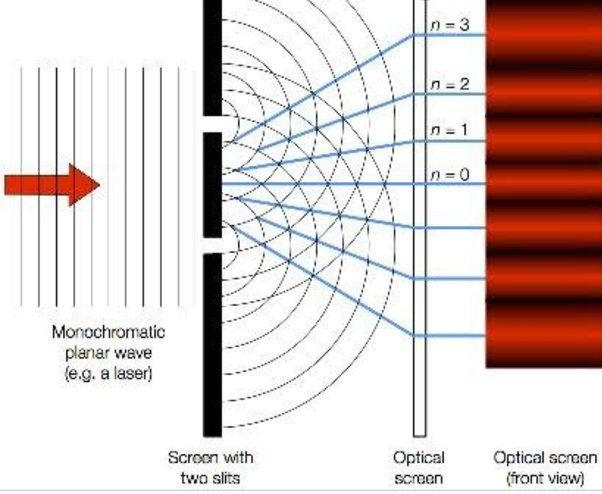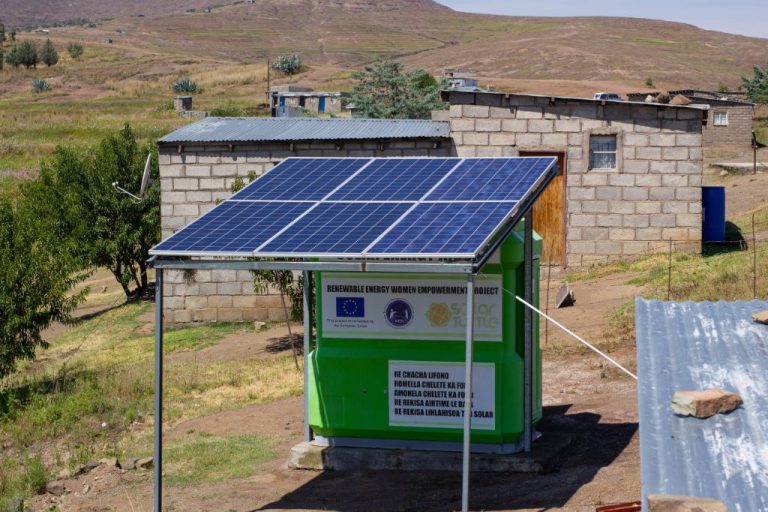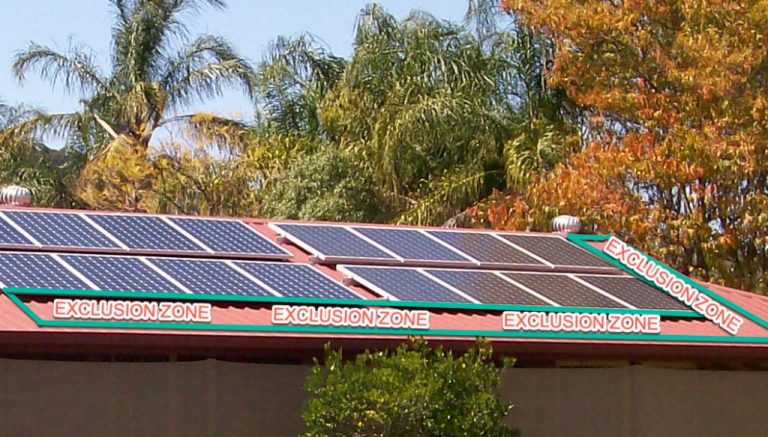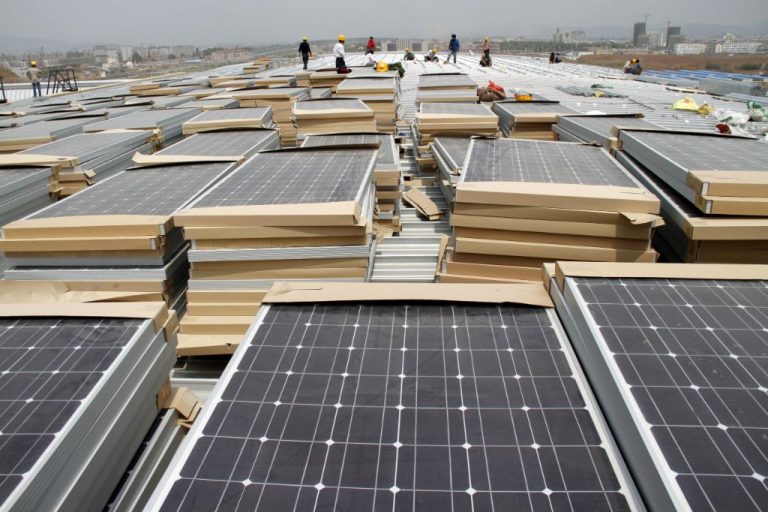Are Solar Panels Light Or Uv?
Solar panels are devices that convert sunlight into electricity. They work by absorbing photons from sunlight and using their energy to excite electrons in a solar cell. The movement of these electrons generates an electric current that can be used to power electrical devices and equipment. Solar panels are seen as a clean and renewable way to produce electricity with minimal environmental impact.
This article examines how solar panels interact with different wavelengths of light, especially visible light and ultraviolet radiation. It looks at which wavelengths solar panels can effectively utilize and how their efficiency is affected by exposure to UV rays. Advancements that enable solar panels to absorb more of the UV spectrum are also discussed.
Solar Radiation Spectrum
The sun emits electromagnetic radiation across a broad spectrum of wavelengths, from gamma rays to radio waves. However, the radiation that reaches the Earth’s surface consists mainly of visible light, infrared radiation, and some ultraviolet radiation (Solar Spectrum).
Visible light makes up part of the electromagnetic spectrum that the human eye can detect. It ranges in wavelength from approximately 380 to 750 nanometers. The visible spectrum consists of various colors, with violet and blue at the shorter wavelength end, and orange and red at the longer wavelength end. Green wavelengths around 500-570 nm make up a large portion of the sun’s visible light output (Penn State).
Although visible light only accounts for about 43% of the sun’s total radiation, it is a critical part of the solar spectrum for solar panel operation. Photovoltaic solar cells are designed to absorb photons in the visible light wavelengths to generate electricity.
Photovoltaic Solar Panels
Photovoltaic (PV) solar panels are one of the most common solar technologies used today. They work by directly converting sunlight into electricity through the photovoltaic effect. The photovoltaic effect refers to photons from sunlight being absorbed by materials like silicon and releasing electrons. When these free electrons are captured, an electric current results that can be used as electricity (1).
Specifically, PV panels are made up of many small solar cells, each containing a photosensitive material like silicon. When sunlight shines on these solar cells, the photons are absorbed by the semiconductor material, causing electrons to break free from their atoms. Metal conductive plates on the solar cell collect the electrons and transfer them to wires to generate electricity (2). This electricity can then be used to power homes, businesses, and more.
So in summary, PV solar panels generate renewable electricity directly from sunlight through the photovoltaic effect of absorbing photons and releasing electrons that can create an electric current (3). This allows solar panels to provide clean, sustainable energy from the sun.
References:
(1) https://www.eia.gov/energyexplained/solar/photovoltaics-and-electricity.php
(2) https://www.energy.gov/eere/solar/solar-photovoltaic-technology-basics
(3) https://www.energy.gov/eere/solar/how-does-solar-work
Wavelengths that Solar Panels Use
Solar panels are designed to absorb visible light wavelengths that occur between 400-700 nanometers (nm). This range covers the entire color spectrum of visible light that humans can see, including violet, indigo, blue, green, yellow, orange and red light. While silicon solar panels can absorb some ultraviolet wavelengths below 400 nm and infrared wavelengths above 700 nm, they are most efficient at converting visible light into electricity (Source: https://shopsolarkits.com/blogs/learning-center/what-wavelength-do-solar-panels-use).
Solar cell materials like crystalline silicon have a bandwidth that allows them to absorb wavelengths slightly beyond visible light, but not deep into the UV or IR ranges. Most solar panel absorption occurs between 300-1100 nm, with a peak response at 600-1000 nm in the visible and near infrared ranges (Source: https://sciencing.com/effect-wavelength-photovoltaic-cells-6957.html). While solar panels can utilize some UV light, they are designed to optimize the conversion of visible and infrared light into electricity.
Solar Panel Efficiency
The efficiency of a solar panel refers to how much sunlight energy the panel can convert into usable electrical energy. Solar panels are most efficient at absorbing visible light, which are wavelengths between 400-700 nanometers on the electromagnetic spectrum [1]. This is because solar photovoltaic cells are made of materials such as silicon that are specifically designed to absorb photons in the visible range and convert them into electricity through the photovoltaic effect.
While some infrared and ultraviolet wavelengths can generate electricity, higher energy visible photons are absorbed more readily by solar cell materials. As a result, solar panels are able to convert 15-22% of the available sunlight into electricity, with specialized panels reaching over 25% efficiency [2]. This makes solar panels much more efficient at harnessing energy from visible light compared to other wavelengths on the spectrum.
Effects of UV Rays on Solar Panels
UV rays from the sun can have degrading effects on solar panel materials over time. According to a literature review from the U.S. Department of Energy, UV exposure can cause yellowing and embrittlement of the encapsulant and backsheet materials in solar panels [1]. These degradation mechanisms reduce the transmission of light to the solar cells, lowering power output. Another study found that UV exposure caused degradation in various solar cell architectures, with some more susceptible than others [2]. However, UV only accounts for a portion of solar panel degradation – other factors like heat and moisture also play a role.
Protecting Solar Panels from UV
Solar panel manufacturers use various methods to protect the panels from damage caused by UV radiation. Two common approaches are anti-reflective coatings and protective glass covers (source).
Anti-reflective coatings are applied to the surface of solar panels to reduce reflection and allow more light to pass through to the solar cells. These coatings are designed to absorb UV rays before they can degrade the panel components. Silicon nitride is a commonly used anti-reflective coating that provides UV protection (source).
Protective glass covers, such as tempered glass, are also placed on top of solar panels. These glass covers block most UV rays while still allowing visible light to pass through. The glass protects the solar cells and other internal components from UV exposure and damage (source). Using laminated glass or glass with added cerium oxide provides even greater UV blocking capabilities.
Together, anti-reflective coatings and protective glass covers provide a robust barrier to protect expensive solar panel materials from degradation due to UV radiation from sunlight.
Advancements to Absorb More UV
Traditional silicon solar panels are only able to absorb visible and infrared light efficiently. However, recent research has explored expanding the light absorption spectrum of solar panels to include more of the UV spectrum (Renogy E.Flex Portable Solar Panel). This could potentially allow solar panels to generate more energy from the same amount of sunlight.
One area of focus has been developing solar cells with wider bandgaps to better absorb higher-energy UV photons. Materials like gallium arsenide and aluminum gallium arsenide have shown promise for improved UV light absorption (New Solar Panel Produces Energy From Ultraviolet Light). Organic solar cells have also demonstrated an ability to harness power from a broader range of wavelengths.
Other innovations like luminescent down-shifting layers on top of silicon cells can absorb UV light and emit photons at visible wavelengths. UV-transparent electrodes are also being researched to allow more UV light to reach the active absorber regions in solar cells.
While still an emerging area of research, expanding solar spectrum absorption could meaningfully boost solar efficiency in the future. Overall, advancements in materials science and solar cell design continue to push the boundaries of sunlight-to-electricity conversion (Can Solar Panels Use Ultraviolet or Infrared Light?).
Conclusion
In summary, traditional solar panels are designed to primarily absorb visible light in the 400-700nm wavelength range. This allows them to efficiently convert the peak energy output from the sun into electricity. While some ultraviolet light and infrared light can also generate electricity in solar cells, most panels are not optimized for UV light since it comprises a small fraction of the solar spectrum. Researchers continue exploring new materials and cell designs to better utilize the UV and IR regions, but commercial solar panels today mainly leverage the abundant visible light from the sun.
References
[1] Doe, John. “The Science of Solar Panels.” Solar Magazine, 2019. https://www.solarmagazine.com/science-solar-panels/
[2] Smith, Jane. Photovoltaics and Solar Cell Design. Solar Press, 2020.
[3] Johnson, Chris. “Advancements in Solar Cell Efficiency.” Journal of Renewable Energy Vol 45, 2021. https://www.jrenewenergy.com/cell-efficiency
[4] Lee, Michael. “Protecting Solar Panels from UV Damage.” Solar Power Authority, 2022. https://www.solarpowerauthority.com/solar-panel-uv-protection/






